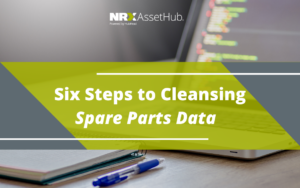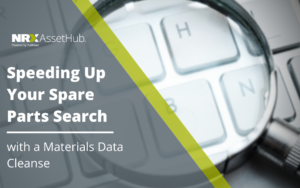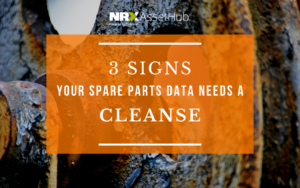Some essential steps to managing your materials data cleanse
Before your cleanse
Prioritize: Unfortunately, if you’re working with tens or hundreds of thousands of spare parts, expecting all your cleansing dreams to come true may be unrealistic. Prioritize major problem areas, particularly the issues that are affecting your revenue and costs, and focus on fixing those first.
Set some key performance indicators (KPIs): Consider what your organization is trying to achieve with their materials data cleanse, then create a method of measuring your progress. How many assets do you want correctly categorized? How many bills of materials should be complete and accurate? How many assets should be correctly meeting your asset hierarchy standards? These are examples of questions to consider before developing the recommended 10 to 15 KPIs.

During the project
Oversee the project: Monitoring a project’s cost, quality, and completeness can be tough. To best oversee the project, we recommend setting aside the spare parts data to be cleansed in a staging area where it can be easily accessed and assessed. Secondly, communication is key. Evaluating the whole dataset and providing consistent feedback to the right stakeholders again and again as needed will make for a thorough cleansing job.
After it’s done
Validate and verify: Before transferring your cleansed data from the staging area back to your EAM system, conduct a quality assurance check to ensure your KPIs are being met, no subsets of spare parts data were missed, and that there are resources available (like short training guides or simple templates) to help workers keep this materials data clean in the future.
Knowledge is power
Managing your materials data cleanse is just as susceptible to common project management issues like miscommunication, scope creep, unclear goals, or spending over budget. As with any project undertaken by a business, having a strong grasp of effective project management during your materials data cleanse will make all the difference in ensuring a successful project. The steps outlined above are just the tip of the iceberg. If you’d like to learn more about managing your materials data cleanse (or just managing spare parts more generally!), click on one of our resources below, or book a demo to chat with our experts and discover how NRX AssetHub can help you cleanse your materials!
Six Steps to Cleansing Spare Parts Data

Speeding Up Your Spare Parts Search with a Materials Data Cleanse

3 Signs Your Spare Parts Data Needs a Cleanse

Share this article

